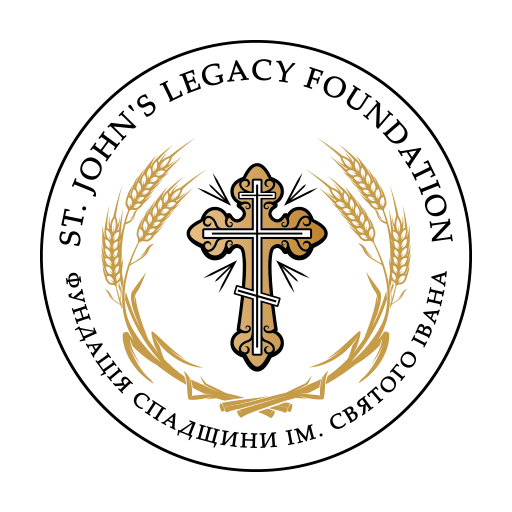St. Michael's Ukrainian Orthodox Church – Zawale (UOC)
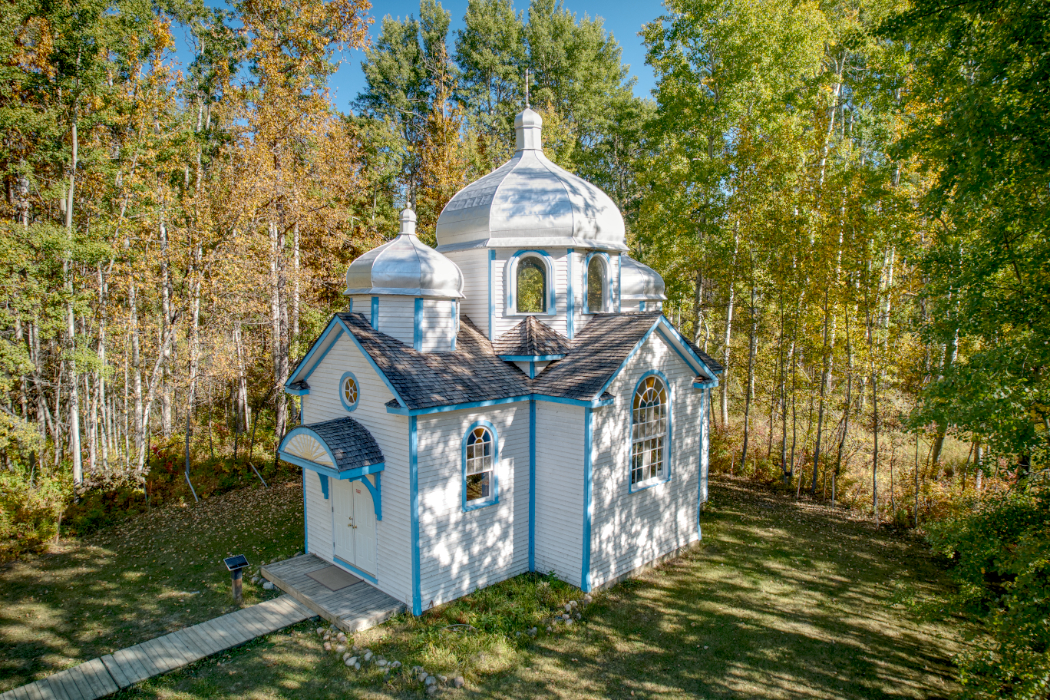

Photographs | Churches
The roots of Orthodoxy in the Zawale area can be traced to the early years of organized religious life in the Ukrainian colony first established in the Star-Wostok districts northeast of Edmonton. Situated several miles to the east, the area that came to be known as Zawale was settled by several immigrant families from the village of Zavallia or Zavalie, in the Sniatyn region of Austro-Hungarian Ukraine. As the Ukrainian bloc settlement began to expand there was growing competition between Orthodox and Catholic missionaries who were keen to secure the loyalty of the Galician and Bukovynian newcomers who were arriving in ever-greater numbers from Europe. The Orthodox-Catholic rivalry was then further complicated by the founding in Winnipeg of the Independent Greek Church in early 1903, which soon embarked on a vigorous campaign to attract adherents in the Ukrainian colonies throughout western Canada.
In the late fall of 1903, the Zawale district was visited by two of the founders of the Independent Church, John Bodrug and Alexander Bachynsky. These freshly ordained ministers came out to the settlement in the company of Peter Svarich, whom John Bodrug hoped to recruit as a fellow clergyman as soon as his former schoolmate from the old country had taken a bride. With Svarich's assistance, the Independent pastors arranged to hold a Sunday service in the home of a local farmer named Wasyl Hnidan, drawing settlers from the surrounding countryside.
This gathering was the first to take place under the auspices of the Independent Greek Church in Alberta, marking a significant development in the religious life of Ukrainians in the province. That the new church was already being denounced by both the Basilian Fathers (who had just started their monastery in Mundare) and the Russian Orthodox missionaries (whose base was in Wostok) undoubtedly helped to stimulate interest in the mission, as some of the settlers were already becoming disillusioned by the bitter conflict that had erupted over the church at Star and the poisoned religious atmosphere.
On 2 August 1904 trustees of the new congregation (Wasyl Jaremy, Wasyl Nikiforuk and Simon Worobec), identified as the Independent Greek Church of Wostok, obtained title to two acres of land at SE 26-55-17 W4 which was purchased for $300 from the homestead of Jan Bruchal. [This property was later owned by Harry Hunka.] This site seems to have been briefly used for a cemetery (there is evidence of five burials having been made on the property), while services continued to be held at the homes of local supporters. However, in 1905, a congregation described as “St. George Church of Wostok,” with Simon Worobec, Wasyl Jaremy and George Hnidan listed as trustees, obtained title to six acres of land at the southeast corner of SW 1-56-17 W4, one mile north of the Bruchal quarter.
It was in 1910 that the Zawale congregation finally erected a place of worship on this second property, which was blessed by Rev. Illia Glowa. During these early years the Independent Greek Church experienced numerous upheavals, including the ouster of Bishop Seraphim and divisive power struggles among some of its leaders.
In 1993 it was decided to move St. Michael's church of Zawale to Camp Bar-v-nok on Pigeon Lake, where it could be restored and given new life as a seasonal place of worship. Moved in March 1994, the sanctuary was subsequently renovated and blessed at a hierarchical service officiated by Archbishop John in 1995. A commemorative plaque was installed at the new location in 2006.
The Cemetery
Located at SW 1-56-17 W4, opposite the site where St. Michael's Ukrainian Orthodox Church stood before its relocation. Apparently, the cemetery established by the original Zawale congregation continued to be used jointly by both the Orthodox and Protestant members after the former resolved to leave the Independent Church. The graveyard is currently administered by the Bissell Memorial United Church in Andrew.
Visit this Cemetery
GPS Co-ordinates: 53.055590, -114.059959
Cemetery GPS: 53.803568, -112.400224
Affiliation: Ukrainian Orthodox Church of Canada
St. Michael's Ukrainian Orthodox Church – Zawale, AB
St. John the Baptist Ukrainian Orthodox Church – Big Meadow (UOC)
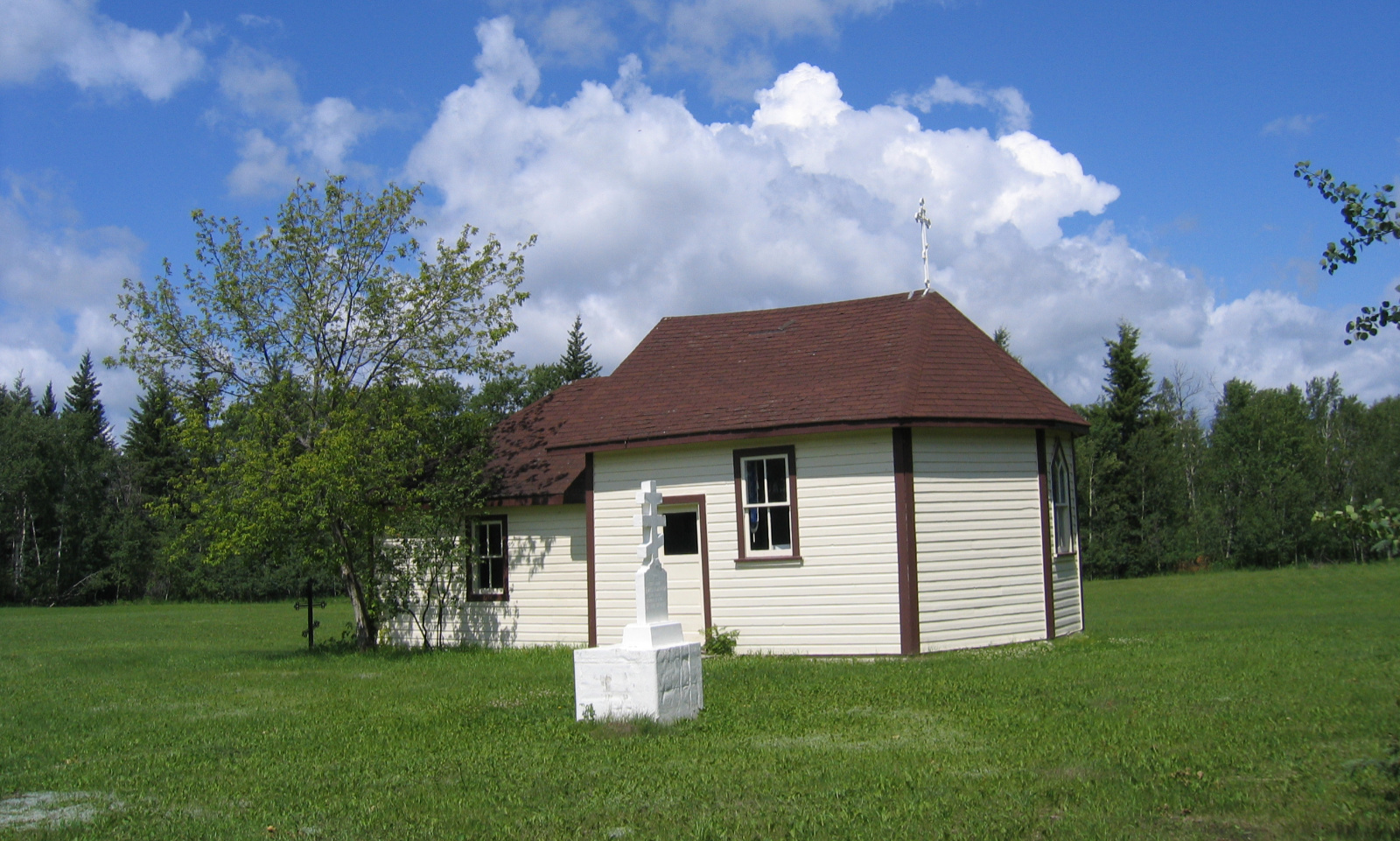

Photographs | Churches
The Big Meadow area was settled primarily by immigrants from Bukovyna, beginning in 1918-1919 with the arrival of Metro Denys and Peter Yarema. A cemetery was established in the district in 1926 on a two-acre site obtained from the government and registered in the name of the Lessard Community Cemetery Company. Interestingly, two non-Ukrainians were among the people listed on the land title, Johnny Levesque and Jack Walter. Although they did not want to belong to the church they were supportive of having a graveyard in the community and seven signatories were needed for the allocation to be approved by the province. The government also apparently required that a structure be erected at the site to house the bodies of the dead until they could be buried. In 1927 Fr. Ivan Mayba is said to have dedicated a cross at the cemetery following the first Ukrainian Orthodox Divine Liturgy held in the community, which was celebrated at the home of a local resident.
In 1930 a small log church, measuring 16’ x 16’, was constructed on the same parcel of land by a handful of volunteers. In 1933 the cemetery was formally blessed by Fr. Tymofei Horbay, who at this time advised the congregation to write to the Consistory requesting to be officially admitted into the Ukrainian Greek Orthodox Church of Canada. The first piece of correspondence received in Winnipeg from Big Meadow dates from 1936, when it was reported that St. John’s church had 15 members and that there were already 11 graves in the cemetery. The same letter also contained details about the founding and early years of the congregation.
In late 1937 or 1938 the original church was enlarged by member volunteers and enhanced with traditional Orthodox decorative features. During this period, services were held at Big Meadow by visiting priests on a monthly basis. However, several more years passed before the St. John’s faithful, prompted by an impending visit by Archbishop Ioan Theodorovich, actually formally registered with the UGOC. At a meeting held on 26 August 1941, twelve members in attendance voted to adopt the constitution and bylaws of the UGOC, after which Archbishop Ioan signed the papers as a witness. Two days later, on 28 August, Archbishop Ioan consecrated St. John’s church at a Hierarchical Divine Liturgy.
In 1943 Big Meadow reported having 7 families as members, but a few years later, it enjoyed a growth spurt that tripled the size of the congregation. According to a letter from Fr. Senishen on 8 April 1948, the influx of 14 new people, combined with local political circumstances and misunderstandings concerning the pension fund that had been established for the clergy, created a rift within the community between the newcomers and the old executive. the crisis seems to have been resolved without further incident, as the required payments were submitted to the Consistory for 1948 and again in 1949, when the membership was given to be 16. The membership at Big Meadow continued to decline over the next three years, from 11, to 10, and 7 by 1952. At the same time, the congregation again fell into arrears over the money that it owed Consistory, which had doubled annual allotments from one to two dollars because of rising costs.
By the end of 1954 the situation seems to have somewhat improved, as St. John’s claimed in an annual report that its 10 paid adherents along with four sympathizers had hosted seven Divine Liturgies over the course of the year. Things continued to slowly get better in the second half of the decade, since by 1958-1959 the church membership had increased to over twenty and Sunday services were being held on a monthly basis.
Nevertheless, in early 1961 the congregation again experienced some serious turbulence, this time triggered by a decision to establish another congregation in the nearby town of Bonnyville in collaboration with the St. John’s parish. The fallout from this bitter conflict undoubtedly had a negative affect on the fortunes of the Big Meadow congregation. By 1962 it reported having “no small children” and in 1967 wrote to the Consistory that it had very small numbers “as people do not want sign as members.”
It appears that a short while later the congregation ceased making its budgetary contributions to Winnipeg and ended its participation in the Bonnyville parish district, gradually curtailing virtually all of its activities sometime in the 1970s. In 1980, Fr. Sawchenko wrote a detailed account of the situation at Big Meadow, noting that the congregation, comprised of approximately 5 remaining members, had not been active for a long time beyond commemorating annual provody at the cemetery. The property owned by the congregation (not including the church) was then estimated to have a value of $20,000, while the hall was thought to be worth $15,000. The church is still standing on its original site, and is apparently still used on rare occasions for weddings and funerals. It is known that the original log church was enlarged with an addition and renovated sometime between the end of the 1930s and 1940s, and that it was painted in 1952.
Despite its lapse into inactive state, it appears that provody (and perhaps occasional services) have nevertheless continued to be held at Big Meadow cemetery each a year as it still listed among the churches being served by Fr. Lipinski.
Visit this Cemetery
GPS Co-ordinates: 54.384564,-110.655931
Affiliation: Ukrainian Orthodox Church of Canada
St. John Ukrainian Orthodox Church – Big Meadow, AB
St. Elias Ukrainian Orthodox Church – Bonnyville (UOC)
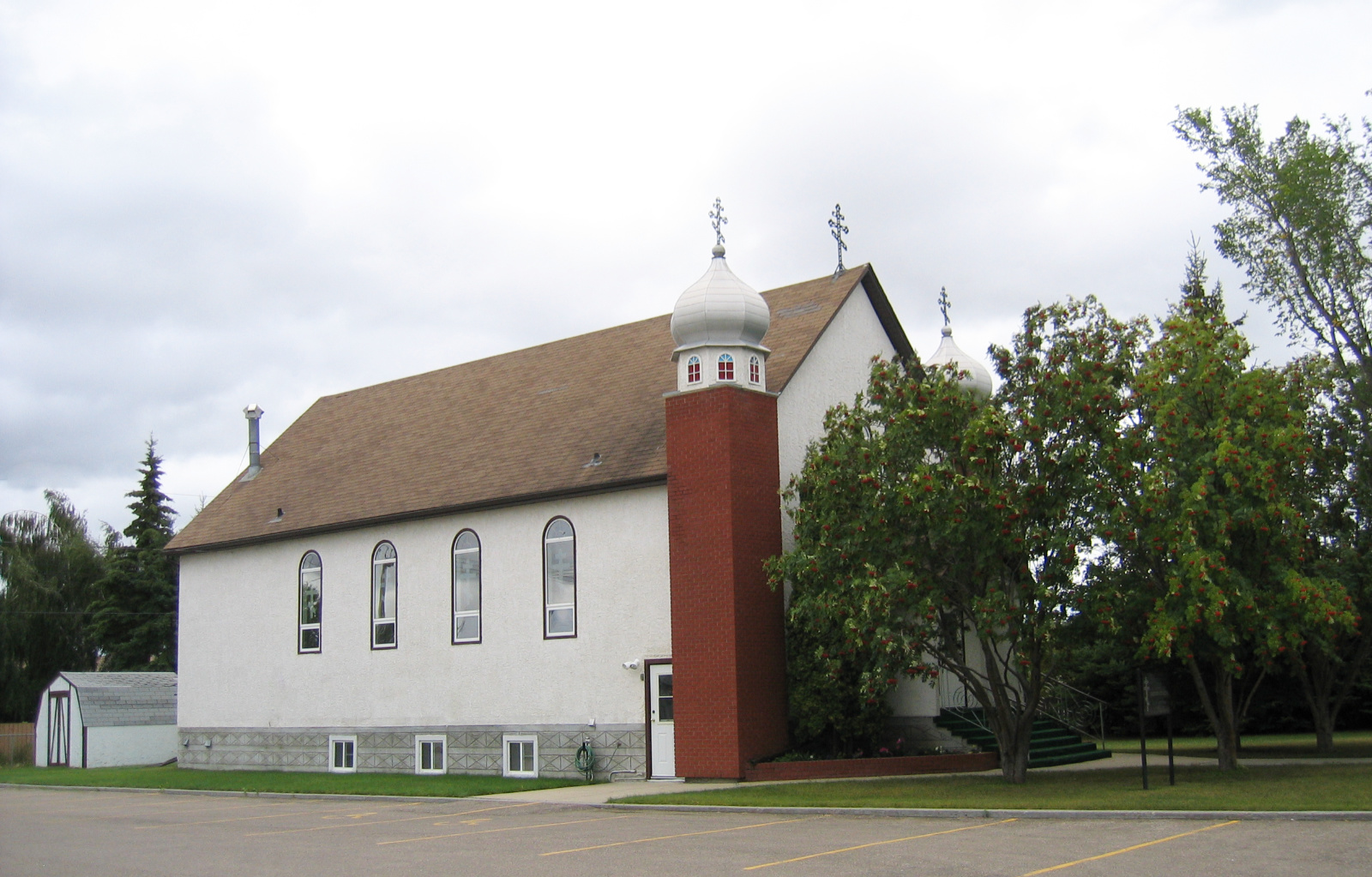

Photographs | Churches
In1959 some members of St. John the Baptist Church in Big Meadow, along with other members who were living in Bonnyville and neighbouring communities, began thinking about establishing a new Ukrainian Orthodox congregation in the town of Bonnyville, that had emerged as a leading regional centre. As was happening in most rural areas across Canada, the farming population was rapidly shrinking while advantageously situated towns and villages were simultaneously enjoying periods of growth due to the profound changes affecting the agricultural economy. With the increasing urbanization of rural settlements, and the greater mobility afforded by improved roads, town life grew in importance. Many districts in the countryside lost the schools, post offices and businesses that for decades had provided them with a local identity and name. Thus, the decision to found a congregation in Bonnyville was in many ways simply a reflection of the transformation that was taking place throughout much of rural Alberta.
Informal discussions in 1959 led to a founding meeting being held at the Huren family home in Bonnyville with the participation of Fr. P. Dorosh-Zmiyiwsky and some key members of the Big Meadow congregation. An executive committee was formed at this gathering, along with a building committee, and plans were made as to how to best proceed with the establishment of a Bonnyville church.
Around the same time, at an annual meeting held at Big Meadow on 4 December 1959, an executive was elected for St. John’s church that also supported the idea of starting a Bonnyville congregation. They agreed that all of the money raised from Christmas carolling that year would be dedicated toward facilitating the establishment of a new church in Bonnyville. There was a general feeling that the Big Meadow church was old and small, with no real potential for future growth.
This decision subsequently proved to be highly controversial with some of the long-time members of St. John’s parish, who responded by calling an extraordinary meeting on 17 January 1960 that elected a new executive, comprised almost entirely of different people. In replacing the leadership that had been chosen just 6 weeks earlier, the new executive accused their predecessors of neglecting their duties to the church (because it was impossible for one executive to serve two parishes) and demanded that all of the keys and records be turned over to them. Subsequently, further allegations were made that in addition to the carolling money, income earned from the Big Meadow hall had also been taken by the ousted executive without proper approval and utilized for the purposes of starting the new congregation. Not only were emotions running high because of these developments, but the threat of legal action meant that the escalating dispute could potentially prove to be costly as well as detrimental to the survival of both Ukrainian Orthodox factions in the nearby communities.
For their part, those behind the Bonnyville initiative argued that they were still members of St. John’s church and that the executive chosen in December had been fully within its rights to help start a town-based congregation. Pointing out that there had been problems in the parish for a number years (which they largely attributed to a difficult individual). They suggested that the majority of Big Meadow members were in favour of the decision to establish a church in Bonnyville. The ousted directors considered settling the issue in court, as they felt their honour had been impugned by the accusations of financial improprieties. Nonetheless, it was eventually decided to hand over the documents and keys to the new St. John’s executive so as to avoid legal complications and hopefully put an end to the unfortunate wrangling. Henceforth the two groups became separate organizational entities, the Bonnyville supporters having decided by February 1960 to adopt St. Elias as the patron of their new congregation.
Moving quickly to realize their goals, at a meeting held on 7 February 1960 the fledgling Bonnyville parish voted to purchase a two-acre parcel of land for their church, and later that year they celebrated their first feast day service on this site. At this time, the St. Elias faithful counted 14 members, virtually all whom still belonged to St. John’s church having only recently paid their annual dues. So as to facilitate the registration of their land with provincial authorities, on 5 August 1961 the congregation resolved to become incorporated under the charter of the Ukrainian Greek Orthodox Church of Canada. They were officially admitted in November of the same year.
Meanwhile, construction of a functional and spacious two-domed sanctuary began in the spring of 1961. By 30 April 1962 the structure was ready to be blessed and put to regular use as a place of worship. Although tensions continued to linger for several years between the Bonnyville faithful and those who had remained committed to Big Meadow. However, since the two congregations were part of the same district and shared the same clergy they continued to interact and periodically cooperate. Of course, with the passing of time, circumstances inevitably changed in both the Big Meadow and Bonnyville communities. Hurt feelings slowly healed and receded into memory. Indeed, despite these controversial and painful beginnings, St. Elias church quickly gained momentum and soon assumed a leading role within the Glendon parish district.
Thus, by 1964 Bonnyville had replaced Glendon as the preferred base for clergy who were assigned to serve the congregations in the northeast corner of the province. Although there was talk about moving the existing residence from Glendon to Bonnyville, and Elk Point and St. Paul expressed a desire to become the seat of the parish district, it was eventually agreed that a brand new manse would be built in the town of Bonnyville with funds raised in all of the congregations. In 1965 the Bonnyville parish district also obtained a ten-year lease for a church camp property on nearby Moose Lake, indicating that Ukrainian Orthodox adherents throughout the lake country of the northeast were looking optimistically toward the future.
In the second half of the 1960s St. Elias enjoyed a period of relative stability. But unfortunately this came to an end in 1970 because of some problems affecting their pastoral leadership. The unsettled situation was to last for two years, during which time the Bonnyville district was served out of Smoky Lake by Fr. Kubin while the manse was rented out to a teacher. While the subsequent posting of Fr. Semotiuk to the district improved matters for a time, by 1973 circumstances compelled the Western Diocese to attempt a reorganization of parish districts that briefly saw Myrnam, South Slawa, Morecambe, and even Wandering River, being added to the communities being served from Bonnyville. As had previously been the case when the seat of the northeast district was Glendon, it continued to be a challenge to generate enough funds to sustain a resident cleric. Given that at the end of 1973, the combined membership of all the churches in the district amounted to approximately sixty, it is not surprising that clergy were finding it extremely difficult to support their families while tending to the needs of their small and scattered congregations.
Eventually, some of these problems worked themselves out through the combined efforts of the clergy and the faithful. By 1978 St. Elias church in Bonnyville, along with its sister congregations at Big Meadow, Gifford, Glendon, Sandy Rapids and St. Paul, were once again functioning as a viable district. Although in the early 1980s Bonnyville reported having 12 members, and this figure grew to sixteen in 1984. The congregation nevertheless had trouble meeting its financial obligations to the Consistory because many of its parishioners were pensioners on a fixed income. In 1988 the Bonnyville and District Council sold the parish manse for the sum of $69,000. The proceeds were earmarked for a house to be built in St. Paul as a residence for Fr. Hohol. In this way, Bonnyville lost its position as the seat of the parish district for northeastern Alberta in much the same way that it had displaced the village of Glendon more than two decades earlier. Since St. Elias reported a membership of 40 individuals (15 families, and 10 singles) for 1994, the congregation does not seem to have suffered any lasting negative effects from the relocation and re-designation of the parish centre.
Visit this Cemetery
GPS Co-ordinates: 54.266138, -110.729885
Cemetery GPS: 54.32647, -110.48105
Affiliation: Ukrainian Orthodox Church of Canada
St. Elias Ukrainian Orthodox Church – Bonnyville, AB
Holy Trinity Ukrainian Orthodox Church – Brosseau / Mamaestie (UOC)

Initiated in 1914, a church was built the same year on land donated by Nick Taschuk and Dmetro Sherstanko. The sanctuary was constructed of logs supplied by members, with Peter Hnatiuk serving as the main carpenter. The building was made of logs on a stone foundation, and covered with a cedar shingled, dome-less roof. One of the logs (which was already squared) was scavenged from the nearby North Saskatchewan River, and dragged to construction site with oxen. The exterior was subsequently covered by wood siding and painted; the interior walls and ceiling were made of v-joint planks and also painted.
Named Holy Trinity Russo Greek Orthodox Church, the Mamesti congregation was served on an occasional and irregular basis by various priests with the Russian Orthodox mission. In the meantime, the parish purchased a bronze bell and hung it outside on a wooden trestle. A few years later, Ignaty Logozar built a bell tower out of logs southwest of the church, and the bell was placed in it.
At a meeting held on 14 January 1942, chaired by John Pundick, parishioners elected to join the Ukrainian Greek Orthodox Church of Canada. Rev. Ambrose Chrustawka then celebrated the first liturgy sung in the Ukrainian language, the congregation subsequently becoming integrated into the lay structures of the Ukrainian Orthodox community.
According to a report by Rev. I. Shwetz, the Brosseau congregation in 1951 consisted of eight members, and was celebrating four liturgies a year. In 1953 church was remodeled, with Walter Gulka of St. Paul serving as the head carpenter and members once again donating material and labour. At this time a new foundation was built, and the church was moved onto it. A porch, altar, and domes were then added to the original structure, while inside, the old ceiling was removed to make way for a dome ceiling. The following year, an iconostasis was installed, featuring altar doors that were hand-carved and donated by Metro Draginda of Hairy Hill. In 1954 the congregation also purchased the old Mamestie school, which had been constructed circa 1910. Closed due to centralization, the school was moved to a site one half mile east of the church at NW 33-11-4 W4, where it was renovated and adapted for use as a parish hall.
Over the years, members of Brosseau church continued to make improvements on both their sanctuary and their parish hall. In 1959, Nickola Karpiuk of Two Hills donated an altar table to the church that he had personally carved by hand. In 1983 the bell tower was replaced by a new one (although the original bell was re-used), and the church roof was covered with fresh shingles. Three years later, the heating system was changed to natural gas. In 1987 new windows were put in, and in 1992 the yard was enclosed with an iron fence. That same year, new icons painted by Brother Simion were obtained for the iconostasis from the Holy Protection Orthodox Monastery in Kansas City.
Meanwhile, in 1971-72 the old porch was removed from the parish hall and a kitchen was added. Electric power was hooked up in 1975, the roof re-shingled in 1980, and a decade later the facility was hooked up with natural gas.
There is a cenotaph at the west entrance to the churchyard. The cemetery is located east of the sanctuary on church property. The first burial was that of Wasyl Oneschuk (d. 16 March 1916).

Play Memory Eternal Chant
Visit this Cemetery
GPS Co-ordinates: 53.802134, -111.602545
Cemetery GPS: 53.80195, -111.60131
Affiliation: Ukrainian Orthodox Church of Canada
Holy Trinity Ukrainian Orthodox Church – Brosseau, AB
All Saints Ukrainian Orthodox Church – Sandy Rapids (Iron River) (UOC)
The immigrants from Volhynia, Bukovyna and Galicia began settling this isolated area in the mid- and late 1920s, with the largest influx coming between 1929-1931. Among them were Ukrainian Catholic, Evangelical and Pentecostal believers, all of whom started congregations and built churches in adjacent settlements to Sandy Rapids, where a school district was established in April 1933. That same year a piece of land was obtained from the government by some of the local farmers for use as an independent cemetery.
In April 1935 an organizational meeting was held in the community, probably at the suggestion of Fr. Ivan Mayba. It was decided to begin inviting priests from Smoky Lake to serve the growing Ukrainian Orthodox population of the Sandy Lake district. Around the same time, the initiative group contacted lawyer Peter Lazarowich in Edmonton with a request that he assist them in getting themselves incorporated as part of the Ukrainian Greek Orthodox Church of Canada so that property that they had acquired could be legally registered as a cemetery. Otherwise, the newly-formed congregation was in danger of forfeiting the land. As a result of these developments, another meeting was held on 15 June 1935 at the home of Wasyl Karasiuk, when a congregation in the name of the Virgin Mary was formally inaugurated. It is known that the first liturgy in the Sandy Rapids district was celebrated by Fr. I. Mayba, and that private homes continued to be used for occasional religious gatherings for more than a decade afterwards.
Because of its remote location, the Sandy River community had only sporadic services from UGOC clergy during these formative years. Nevertheless, in late 1940 a congregation member wrote a letter to the Consistory expressing concerns that some of the Volhynian residents of Sandy Rapids (described as being supporters of “Tsarodoxy” and “katsapism”) were talking about wresting control of the cemetery on behalf of the Russian Orthodox Mission. It was feared that such a move was being planned for a congregational meeting to be held in January 1941. Although it is unclear if such an attempt was ever made, the Consistory advised that the church property, having been registered with the UGOC, could not be legally be taken by the Russian Mission, so long as even a minority remained committed to the Ukrainian Orthodox Church in whose name the congregation had been organized. Regardless, this threat – which was largely attributed to the work of a Volhynian agitator who was trying to convince his countrymen that they were “White Ruthenians,” or Belarusians – seems to have passed without major incident or lasting effect. Indeed, by late 1942, the congregation announced that it was thinking of building a sanctuary. In December, they wrote to the Consistory asking for their assistance in getting a government permit to cut the timber required to produce 12,000 feet of boards. The necessary arrangements were finally made the following March. On 6 June 1943, the congregation passed a resolution re-affirming that it was an integral and permanent part of the Ukrainian Greek Orthodox Church of Canada, recognizing its charter, bylaws and the decisions of Sobors, while the property remained under the ownership and control of the congregation members as a component part of the UGOC.
Since the Second World War had exacerbated the UGOC’s longstanding difficulties in supplying priests to many rural settlements, the Sandy Rapids Orthodox faithful received very few pastoral visits in the first half of the 1940s. Recognizing this situation, and the fact the community was in process of trying to build a place of worship, in 1947 the Consistory absolved the congregation of all of its debts to the Diocesan Fund from 1940 to 1945. Not surprisingly, following the permanent appointment of Fr. Senishen to the Glendon parish district in late 1944, the pastoral care provided to Sandy Rapids improved noticeably. Consequently, in 1946 the congregation claimed to have six member families and hosted five Divine liturgies (both figures increasing by one the following years), so its annual fee to the Consistory was restored.
By 1948 the congregation was finally ready to undertake the construction of their church. Three hundred dollars was initially raised by the building committee to get started. Some 3,500 feet of lumber were donated by members for the structure – the design of which is said to have been modelled after churches that the local settlers remembered from the villages in their Ukrainian homeland. A man named Klym Martyniuk (who in 1933 had been the founding chairman of the Garth Ukrainian Evangelical Church) was hired as the carpenter to oversee the project at a dollar an hour. Helped by volunteers, his labour charges eventually totalled $1100. The rectangular shaped structure with a large vestibule was adorned with two flanking domes over the corners of the façade, and was completed without incurring any debts thanks to the successful fundraising efforts of the members. Meanwhile, in early 1949 the congregation wrote to the Consistory requesting that their feast day be changed from that of St. Mary the Protectress to All Saints Sunday.
Having their own place of worship helped to stabilize and stimulate the congregational life of the Sandy Rapids congregation. By 1951 it had grown to 14 families and celebrated eight Divine Liturgies. Two years later, the number of services had increased to eleven. But the lack of a permanent priest for the Glendon district was causing some Sandy Lake adherents to talk about going over to the Russian Orthodox church. By 1955 the congregation was also reporting that it was having difficulties instilling religious values in the youth and that it could not afford to send a delegate to the Sobor. Nevertheless, throughout the second half of the 1950s, 12-13 liturgies were sung at the All Saints church each year. The membership had expanded to 28 families by 1960, when the church was formally consecrated at a Hierarchical service officiated by Bishop Andrew of the Western Diocese. By this time, the interior of the sanctuary was fully finished, and boasted a large and attractive ikonostasis.
The congregation continued to flourish for several more years, but then gradually began to lose members with the passing of time and the decline of rural populations. Nevertheless, in 1994 the congregation reported having a total 18 adult members, seven of whom were couples.
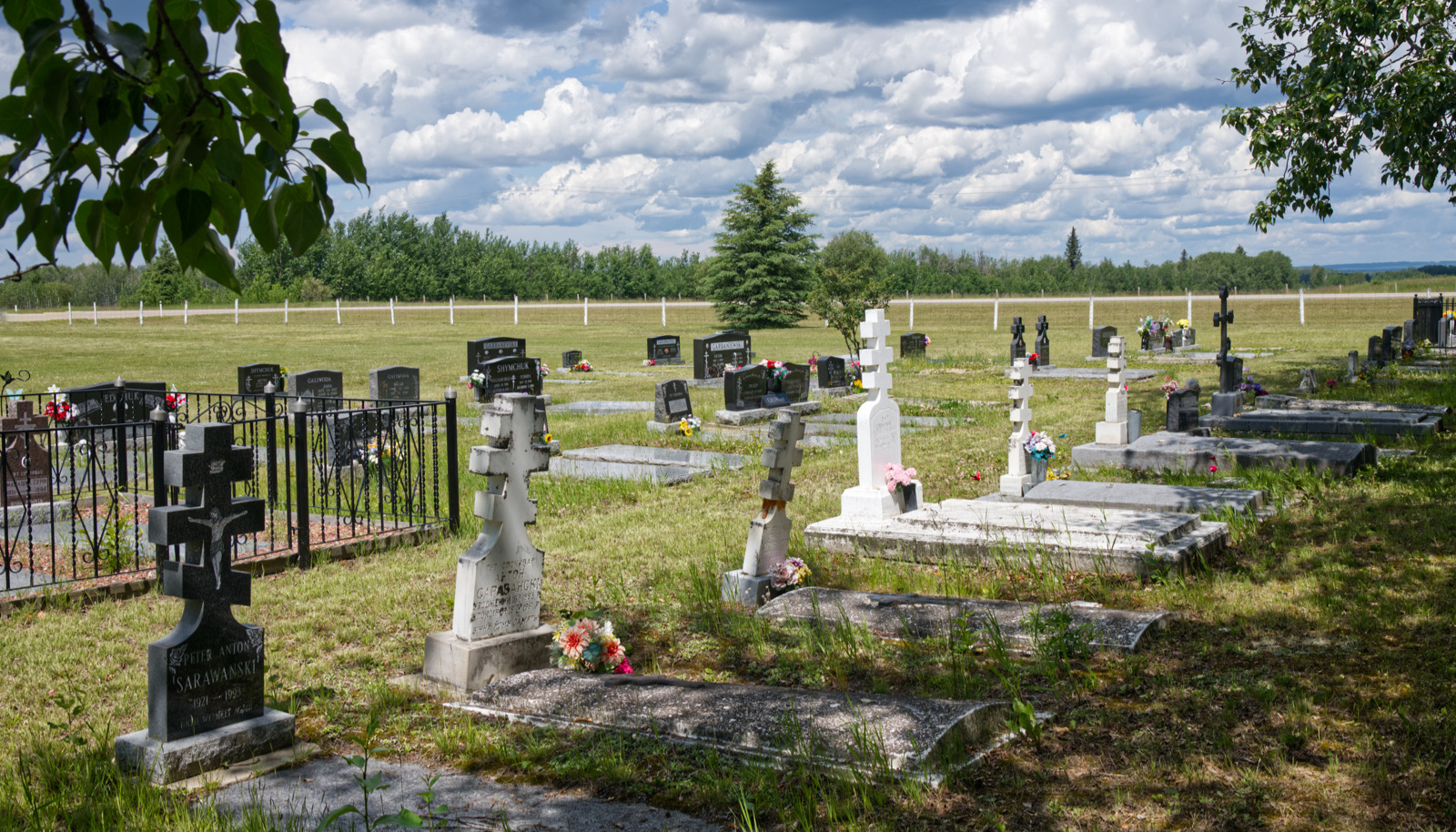
Play Memory Eternal Chant
GPS Co-ordinates: 54.456690, -111.025846
Affiliation: Ukrainian Orthodox Church of Canada



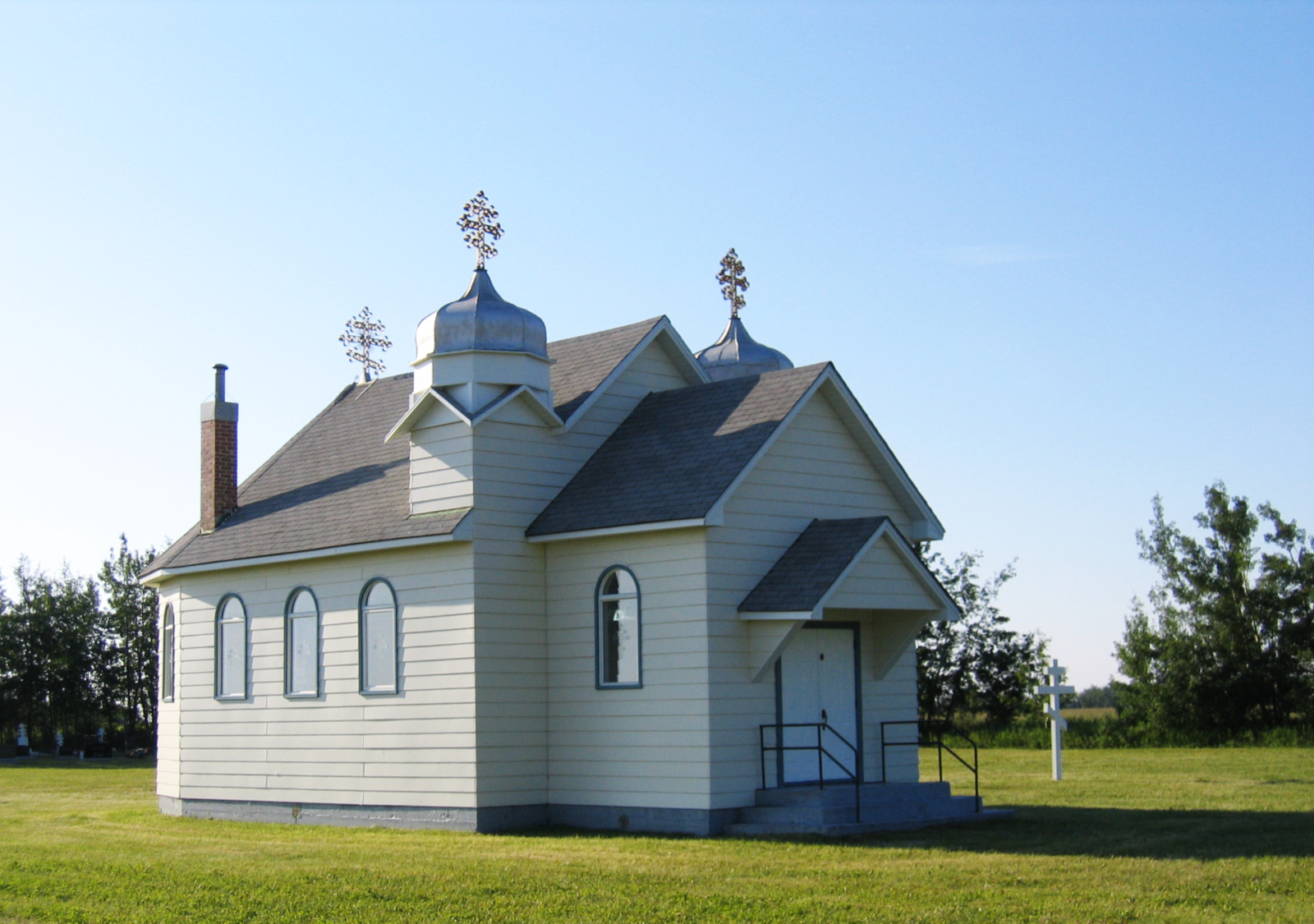
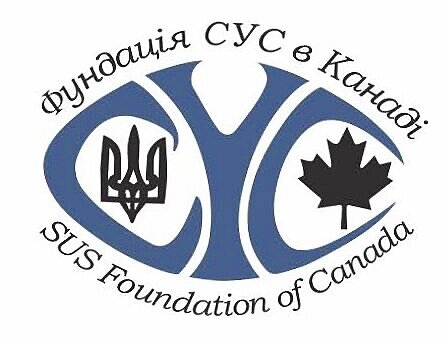 Financial support generously provided by:
Financial support generously provided by: 